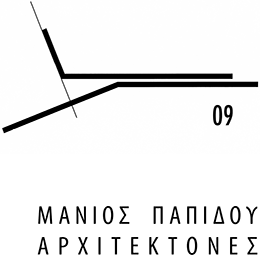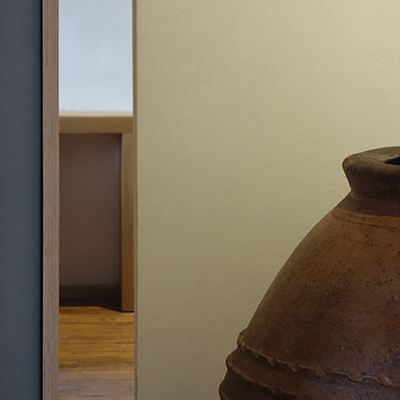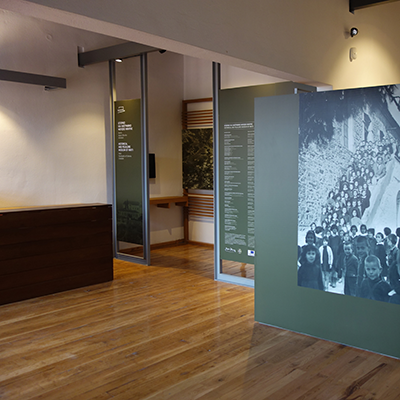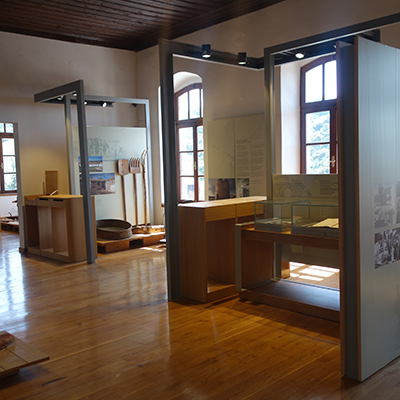Historical and Folklore Museum of Nikiti. Museographical Study | A Continuous Infrastructure
A stone-wall building dating back to 1870 once housed the Nikiti Primary School. Nowadays, this longitudinal, listed building is home to the Historical and Folklore Museum of Nikiti. Within the former classrooms of the old school, the complex structure of the museum unfolds. The simplicity of the old classrooms’ furnishings has given way to the complexity of the furnishings used for the display, arrangement and protection of the exhibits, to a diversity of materials and to the exhibits themselves. The challenging task of knowledge dissemination continues, albeit taken to a different level. Continuity, the demand for a continuous journey through time and knowledge, is featured as the guiding component of the concept.
The design of a continuous infrastructure serves as a predominant manifestation of the continuum. The continuous infrastructure, as an extension of the same features of the building, supports the design of the permanent exhibition, as well as any future redesigns. This infrastructure is composed of a connecting metal structure and a penetrating wooden panel.
– The 66-meter long connecting metal structure penetrates the inner walls as it travels from hall to hall. This rectangular metal structure (a UPN 180 steel profile) is arrayed along the longitudinal axis of the building, and is supported, at a height of 3.25 meters from the floor, by abstract frames (vertical UPN 100 steel profile frames, of a controlled number and of defined dimensions).
– The 22-meter long penetrating wooden panel, which is also arrayed along the longitudinal axis of the building, functions both as a supporting structure for printed panels and exhibits and as an exhibit in its own right, reminiscent of the now-missing lath-and-plaster inner walls.
– The 66-meter long connecting metal structure penetrates the inner walls as it travels from hall to hall. This rectangular metal structure (a UPN 180 steel profile) is arrayed along the longitudinal axis of the building, and is supported, at a height of 3.25 meters from the floor, by abstract frames (vertical UPN 100 steel profile frames, of a controlled number and of defined dimensions).
– The 22-meter long penetrating wooden panel, which is also arrayed along the longitudinal axis of the building, functions both as a supporting structure for printed panels and exhibits and as an exhibit in its own right, reminiscent of the now-missing lath-and-plaster inner walls.
This continuous infrastructure is accompanied by a set of display stands. On these stands, taking themselves the form of steel frames, printed panels are mounted; lighting fixtures are fitted on their brackets and on the wooden platforms arranged in front of them exhibits are displayed. These stands also function to protect the adjacent furnishings and to demarcate the individual themed areas of the museological study, and sharing the same geometry, same height and same constructional characteristics (UPN 140 and UPN 100 steel profiles) as the connecting metal structure, since in essence they are continually repeated, they mean to define the continuum theme from another perspective.
In contrast to the powerful penetrating ability of the connecting metal structure and the penetrating wooden panel, all of the furnishings and exhibits keep a discreet distance from both the outer and inner walls.
Museological Study: Nefeli Liontou, Artemis Stamatelou
Exhibition Curators: Thalia Akrivopoulou, Nefeli Liontou
Exhibition Curators: Thalia Akrivopoulou, Nefeli Liontou












